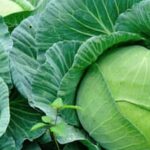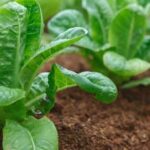Are you interested in starting a garden but not sure where to begin? Whether you have a green thumb or are a complete novice, getting started with beginner gardening can be a fun and rewarding experience. In this article, we will explore the best vegetables for beginner gardening, as well as provide valuable tips and information to help you get your garden off to a great start.
When it comes to beginner gardening, selecting the right vegetables is key to ensure a successful growing experience. By choosing vegetables that are easy to grow and maintain, you can build confidence and enjoy the process of watching your garden flourish. Understanding soil and sunlight requirements, selecting the right vegetables for your climate, and planning and designing your garden layout are all important factors to consider when starting out.
In the following sections, we will delve into the essential aspects of beginner gardening, from understanding soil and sunlight requirements to tips for planting and caring for your vegetables. We will also discuss common pests and diseases that may affect your garden, as well as how to manage them effectively. With this comprehensive guide, you will be well-equipped to kickstart your journey into the world of gardening and enjoy an abundant harvest of homegrown vegetables.
Understanding Soil and Sunlight Requirements
Soil Preparation
Before planting any vegetables in your beginner garden, it’s important to understand the soil requirements for successful growth. The best vegetables for beginner gardening thrive in well-draining, nutrient-rich soil. Start by testing your soil pH, which should ideally be between 6.0 and 7.0 for most vegetables. If needed, amend the soil with organic matter such as compost or aged manure to improve its fertility and structure.
Sunlight Needs
Sunlight is another critical factor to consider when selecting the best vegetables for beginner gardening. Most vegetable plants require at least 6-8 hours of direct sunlight each day to produce a bountiful harvest. Take note of the areas in your garden that receive full sun, partial sun, or shade throughout the day, and choose vegetables that are suitable for the available light conditions.
Best Vegetables for Beginner Gardening
When it comes to choosing the right vegetables for your beginner garden based on soil and sunlight requirements, there are several options to consider. Some of the best vegetables for beginner gardening include tomatoes, lettuce, carrots, peppers, zucchini, and green beans. These vegetables are relatively easy to grow, versatile in their culinary uses, and have broad adaptability to different growing conditions.
Additionally, they can provide a rewarding experience for beginners as they learn and develop their gardening skills. By understanding the soil and sunlight needs of these recommended vegetables, you can set yourself up for a successful and enjoyable gardening journey.
Selecting the Right Vegetables for Your Climate
When it comes to beginner gardening, one of the most crucial factors to consider is selecting the right vegetables for your climate. Different vegetables thrive in different climates, so it’s important to choose wisely in order to ensure a successful and bountiful harvest. Whether you live in a hot and dry climate or a cooler, more temperate one, there are plenty of options for everyone.
In general, some of the best vegetables for beginner gardening across various climates include tomatoes, lettuce, carrots, and bell peppers. These vegetables are known for being relatively low-maintenance and adaptable to different growing conditions. Tomatoes, for example, can be grown in both warm and temperate climates, making them a versatile choice for beginner gardeners. Lettuce is another great option as it can thrive in cooler temperatures, making it suitable for beginners living in milder climates.
For those living in warmer climates, bell peppers and carrots are excellent choices. Bell peppers love heat and sunlight, making them perfect for hot climates. Carrots also do well in warm weather as long as they receive plenty of sunlight and well-draining soil. By selecting the right vegetables for your specific climate, you’ll set yourself up for a successful and rewarding gardening experience.
| Climate | Recommended Vegetables |
|---|---|
| Hot & Dry | Bell Peppers, Tomatoes |
| Cool & Temperate | Lettuce, Carrots |
Planning and Designing Your Beginner Garden
When planning and designing your beginner garden, it’s important to consider the layout and spacing of your chosen vegetables. One of the best vegetables for beginner gardening is tomatoes. They are relatively easy to grow and can thrive in containers or directly in the ground. When planning the layout of your garden, make sure to leave enough space between each tomato plant to allow for proper air circulation and growth.
Another great option for beginner gardeners is lettuce. Lettuce is a versatile vegetable that can be grown in a variety of climates and can even be cultivated in containers or small raised beds. When designing your garden, consider planting different varieties of lettuce to add color and variety to your vegetable patch.
Carrots are also an excellent choice for novice gardeners. These root vegetables require well-drained soil and plenty of sunlight, making them a great option for beginners with limited gardening experience. When planning your garden design, make sure to space out your carrot seeds evenly to avoid overcrowding and encourage healthy growth.
In addition to these vegetables, you may also want to consider incorporating easy-to-grow herbs such as basil or parsley into your beginner garden design. Herbs are not only practical for culinary purposes but they also add fragrance and visual interest to your garden space. As you plan and design your beginner garden, remember to choose vegetables that are well-suited to your climate and will thrive with proper care and attention.
Essential Tools and Supplies for Beginner Gardening
When starting a beginner garden, it’s important to have the essential tools and supplies to ensure success in growing your own vegetables. Here are some key items that every beginner gardener should have in their arsenal.
Gardening Tools
One of the first things you’ll need is a set of basic gardening tools. This includes a hand trowel, gardening gloves, pruners, a garden hose or watering can, and a shovel. These tools will help you with planting, weeding, watering, and maintaining your garden.
Quality Soil and Fertilizer
Good quality soil is essential for growing healthy vegetables. Invest in nutrient-rich soil that has good drainage to ensure healthy plant growth. Additionally, consider using organic fertilizers to provide the necessary nutrients for your plants without harmful chemicals.
Seeds or Seedlings
Decide whether you want to start from seeds or purchase seedlings from a nursery. Some good options for beginners include tomatoes, lettuce, peppers, and radishes. Consider the climate and sunlight requirements when choosing which vegetables to grow in your garden.
Having the right tools and supplies is crucial for setting up a successful beginner garden. By investing in quality soil, fertilizers, and selecting the best vegetables for beginner gardening, you can set yourself up for a rewarding experience as you watch your vegetables grow from seed to harvest.
Tips for Planting and Caring for Your Vegetables
When it comes to beginner gardening, selecting the right vegetables is crucial for a successful and rewarding experience. Whether you have limited space or a large backyard, there are several vegetables that are easy to grow and maintain, making them the best choice for beginner gardeners. Some of the best vegetables for beginner gardening include tomatoes, lettuce, and green beans.
Tomatoes are a popular choice for beginners because they are not only easy to grow but also produce an abundant harvest. They thrive in sunny locations with well-drained soil and can be grown in containers or directly in the ground. Lettuce is another great option for beginners as it grows quickly and can be harvested multiple times throughout the growing season.
It prefers cooler temperatures and partial shade, making it an ideal choice for spring and fall gardens. Green beans are also recommended for beginner gardeners due to their low maintenance requirements and high yield potential. They can be grown vertically to save space and prefer full sun with well-draining soil.
In addition to these three vegetable options, other easy-to-grow choices for beginner gardeners include carrots, radishes, and bell peppers. These vegetables have minimal care requirements and can be grown successfully by those new to gardening. As a beginner gardener, choosing the right vegetables will not only increase the likelihood of a successful harvest but also provide an enjoyable learning experience in the world of gardening.
| Vegetable | Growth Requirements |
|---|---|
| Tomatoes | Sunny location with well-drained soil |
| Lettuce | Cooler temperatures and partial shade |
| Green Beans | Full sun with well-draining soil |
Common Pests and Diseases and How to Manage Them
When starting a beginner garden, it’s important to be prepared for potential pests and diseases that could affect your vegetables. Knowing how to manage these issues can help ensure a successful and healthy garden. Here are some common pests and diseases that beginners might encounter, along with tips on how to handle them:
1. Aphids: These small insects can quickly infest your vegetable plants, sucking out the sap and causing damage. To manage aphids, consider introducing natural predators like ladybugs or use a strong blast of water to physically remove them from your plants.
2. Powdery Mildew: This fungal disease is characterized by a powdery white growth on the leaves of plants. To prevent powdery mildew, ensure proper air circulation around your plants by avoiding overcrowding and watering at the base of the plant rather than overhead.
3. Tomato Hornworm: These large caterpillars can devastate tomato plants in a short amount of time. Handpicking these pests off your plants is an effective method of control, or you can introduce natural predators like parasitic wasps.
By being aware of the potential pests and diseases that can affect your vegetable garden, as well as having knowledge of how to manage them, you’ll be better equipped to keep your plants healthy and thriving.
Harvesting and Enjoying Your Homegrown Vegetables
Once you have successfully planted and cared for your beginner garden, it’s time to reap the rewards of your hard work by harvesting and enjoying your homegrown vegetables. Harvesting your vegetables at the right time is crucial for getting the best flavor and nutrition from your crops. Here are some tips for harvesting and enjoying your homegrown vegetables:
- Harvesting at the Right Time: Different vegetables have different indicators for when they are ready to be harvested. For example, tomatoes should be picked when they are fully colored but still firm, while lettuce can be harvested when the leaves are large enough to eat.
- Enjoying Your Harvest: Once you’ve picked your vegetables, it’s time to enjoy them in delicious meals. Whether it’s a fresh salad with garden-grown lettuce and tomatoes or sautéed zucchini, there’s nothing quite like the taste of homegrown produce.
- Preserving Your Vegetables: If you have a surplus of vegetables, consider preserving them for later use. You can freeze or can certain vegetables to enjoy them throughout the year, ensuring that none of your hard-earned produce goes to waste.
Harvesting and enjoying your homegrown vegetables is one of the most satisfying aspects of beginner gardening. It allows you to savor the flavors of your labor while also providing nutritious and delicious food for you and your family.
Remember that every vegetable has its own unique harvesting requirements, so be sure to research each specific crop to ensure that you are picking them at their peak ripeness. By following these tips, you can make the most out of your homegrown harvest and truly appreciate the fruits (and vegetables) of your labor as a beginner gardener.
Conclusion and Next Steps for Beginner Gardeners
In conclusion, starting a beginner garden can be an exciting and rewarding experience. By understanding the soil and sunlight requirements as well as selecting the right vegetables for your climate, you can set yourself up for success. Planning and designing your garden layout, as well as having the essential tools and supplies, are crucial steps in getting started.
As you begin planting and caring for your vegetables, it’s important to stay on top of common pests and diseases that may affect your garden. By implementing preventative measures and knowing how to manage these issues, you can ensure a healthy and thriving garden.
Finally, once it’s time to harvest, there’s nothing quite like enjoying the fruits (or vegetables) of your labor. Whether it’s adding homegrown tomatoes to a salad or blending up fresh herbs for a recipe, savoring the flavors of your own garden is a truly special experience. As you continue on your gardening journey, don’t be afraid to try new vegetables or expand your skill set.
Gardening is a continuous learning process, and each season brings new opportunities for growth and success. So get out there, get your hands dirty, and enjoy the bountiful harvest from one of the best vegetables for beginner gardening.
Frequently Asked Questions
What Vegetables Are Good for First Time Gardeners?
First-time gardeners may want to start with easy-to-grow vegetables like tomatoes, lettuce, peppers, and zucchini. These vegetables are relatively low-maintenance and don’t require a lot of space to thrive, making them perfect for beginners.
What Vegetables Should I Start First?
When starting a first vegetable garden, it’s a good idea to begin with vegetables that are simple to grow and maintain. This includes planting tomatoes, cucumbers, radishes, or lettuce as they are relatively low maintenance and can provide a satisfying harvest for beginners.
What Are the 10 Easiest Vegetables to Grow?
For those new to gardening, some of the easiest vegetables to grow include tomatoes, zucchini, peppers, lettuce, carrots,

If you’re looking to get into vegetable gardening, or are just looking for some tips on how to make your current garden better, then you’ve come to the right place! My name is Ethel and I have been gardening for years. In this blog, I’m going to share with you some of my best tips on how to create a successful vegetable garden.





